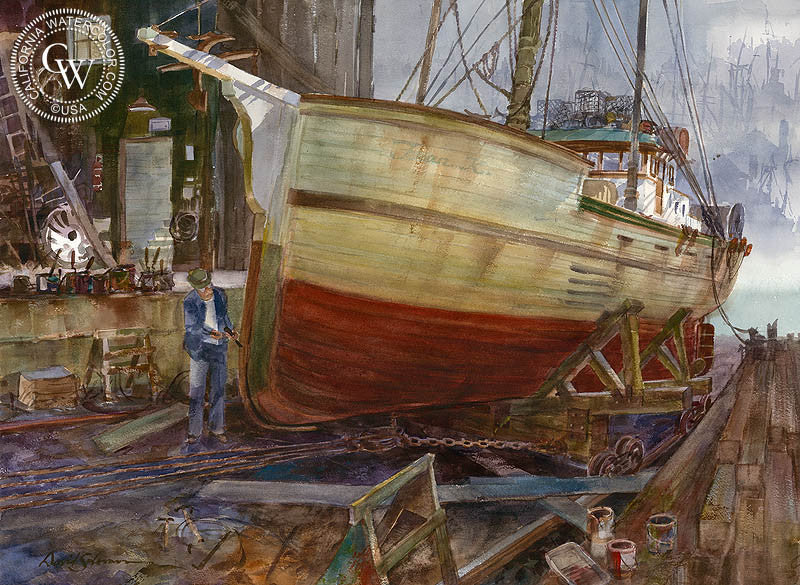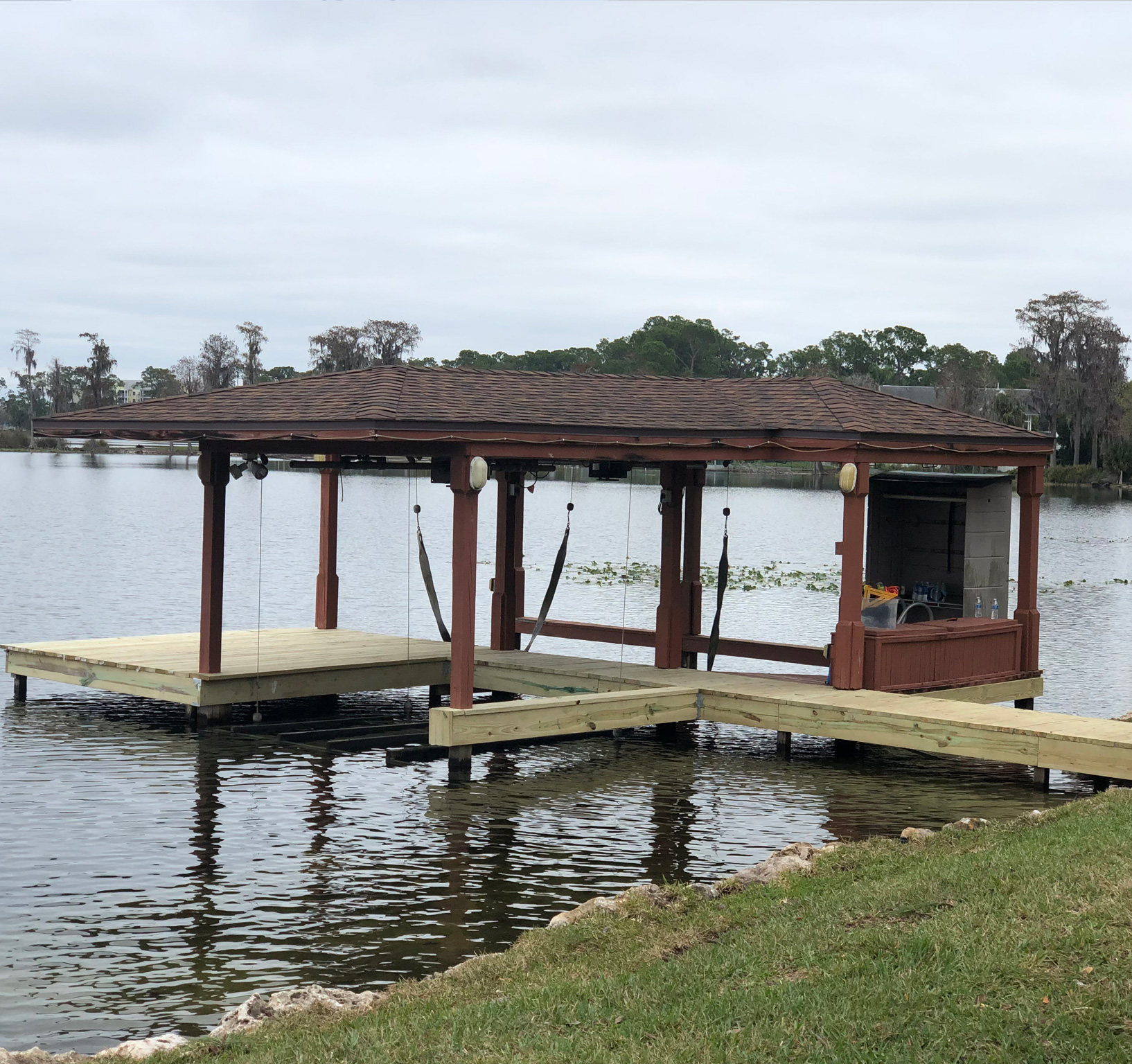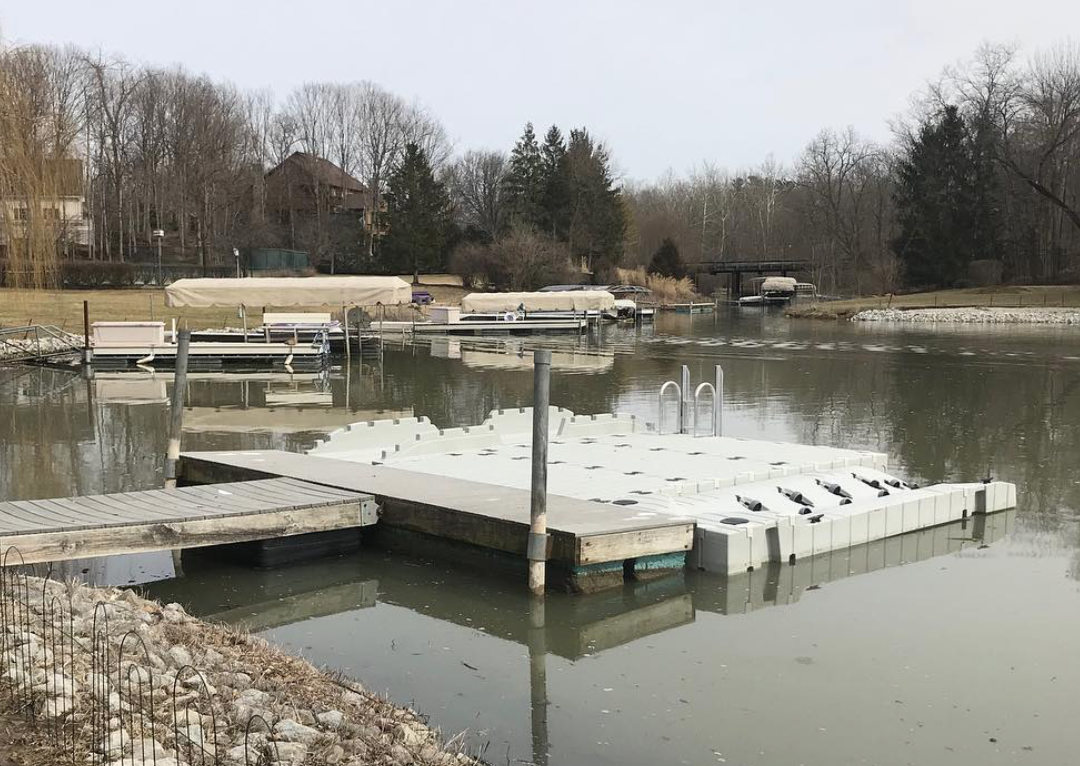Effective Dock Repair Service Techniques: Making Sure Architectural Stability
Making certain the structural stability of anchors with efficient fixing methods is critical for the long life and security of aquatic centers. This involves a multi-faceted approach starting with thorough assessments using sophisticated technologies like finder devices and from another location operated cars (ROVs) to identify both visible and hid damages. Ultimately, choosing the best repair service materials, such as corrosion-resistant alloys and composite products, is important for durability. Structural reinforcement methods, including the execution of cross-bracing systems and load-distribution plates, play an essential function in mitigating stress factors. Nonetheless, the value of these techniques ends up being obvious when discovering sophisticated repair techniques and preventative upkeep methods.
Examining Dock Damage
Examining dock damages is a vital initial step in guaranteeing the architectural honesty and safety and security of any docking facility. This preliminary examination entails an extensive examination to identify both concealed and noticeable problems. Trick facets to examine consist of the dock's structure, pilings, decking, and equipment. Each element should be inspected for signs of wear, rot, rust, or other forms of deterioration that might compromise the structural stability.
Structural engineers or qualified inspectors commonly execute these assessments using specialized methods and devices. For example, underwater evaluations might utilize sonar tools or from another location operated automobiles (ROVs) to find immersed damage. Over water, aesthetic assessments are enhanced by utilizing moisture meters and other diagnostic devices to uncover underlying issues not immediately visible to the naked eye.

Finding Repair Service Materials
Choosing the ideal repair products is a pivotal action in the dock restoration procedure, one that directly affects the long life and efficiency of the fixed framework. Product option need to be driven by variables such as ecological conditions, load-bearing needs, and compatibility with existing dock elements. Timber is a traditional choice for docks due to its natural strength and aesthetic appeal. Nevertheless, selecting the right kind of timber, such as pressure-treated lumber or naturally rot-resistant species like cedar or teak, is critical to endure aquatic settings.
Along with timber, composite materials are significantly popular as a result of their resilience and low maintenance demands. Composites, normally made from a blend of plastic and timber fibers, supply excellent resistance to rot, pests, and UV damage. For metal anchors, picking corrosion-resistant alloys such as galvanized steel or marine-grade aluminum is crucial to protect against rust and ensure structural integrity in saline water problems.
Epoxy resins and marine-grade sealers are essential for fixing cracks and securing joints, providing a water resistant barrier and boosting the dock's total toughness. By diligently picking top quality materials, dock fixings can attain durable results, therefore safeguarding versus future destruction and ensuring safe, dependable usage.
Architectural Support Techniques
Efficient architectural reinforcement techniques are critical in making sure the security and durability of dock fixings. One fundamental method entails making use of steel or composite support bars (rebar) within concrete structures. Rebar gives extra tensile strength, protecting against splits and dispersing lots a lot right here more equally. This technique is specifically effective for anchors revealed to heavy loads or harsh ecological conditions.
Another crucial strategy is the application of fiber-reinforced polymers (FRP) These products offer high strength-to-weight proportions and outstanding resistance to deterioration, making them excellent for reinforcing concrete or wooden anchors. FRP can be used in strips or sheets and bound with epoxy materials to enhance architectural honesty.
Bracing and securing systems additionally play an important function in structural reinforcement. Cross-bracing, making use of metal or wood beam of lights, can neutralize lateral forces, decreasing persuading and movement. Anchoring systems, such as helical piers or driven stacks, provide a steady foundation by moving lots to deeper, much more steady soil layers.
Last but not least, the combination of load-distribution plates can aid distribute weight much more uniformly throughout the dock's surface area, alleviating local anxiety points. These techniques jointly guarantee that anchors continue to be secure and durable, efficient in standing up to the roughness of their operational atmosphere.
Advanced Repair Work Methods

Another sophisticated strategy involves underwater welding, which permits fixings to be carried click to find out more out without the need to dewater the area. This technique is particularly beneficial for attending to structural concerns in immersed dock components, making certain marginal disturbance to operations. Enhanced welding methods, coupled with robot systems, provide accuracy and dependability, consequently extending the lifespan of the dock.
In addition, cathodic security systems are executed to avoid deterioration in metallic dock frameworks. By utilizing sacrificial anodes or impressed current systems, these methods successfully alleviate the electrochemical processes that lead to product wear and tear.
Last but not least, advanced tracking innovations, such as architectural health and wellness monitoring (SHM) systems, provide real-time data on the condition of dock structures. These systems allow positive upkeep and prompt treatments, eventually making sure the long-term structural integrity of the dock.
Upkeep and Avoidance
Upkeep and avoidance are basic ideas that underpin the durability and safety of dock structures. Normal assessments are paramount, enabling very early discovery of damage, potential weaknesses, and ecological impacts. A positive method, entailing routine look for deterioration, rot, and structural shifts, mitigates expensive fixings and lengthens the dock's operational life.
Preventive steps must consist of applying safety finishes to metal elements to defend against corrosion and making use of treated timber to stand up to decay. Additionally, guaranteeing proper drain and air flow can stop water accumulation, which is a Recommended Reading common cause of architectural degradation. Integrating top quality materials and sticking to maker guidelines throughout building and fixing phases likewise play crucial functions in improving durability.

Training workers in dock maintenance best techniques makes sure regular application of precautionary steps. Leveraging technological advances, such as drones for assessments and sensors for real-time tracking, can better enhance maintenance initiatives. By prioritizing maintenance and avoidance, dock proprietors can make sure architectural integrity, functional safety and security, and economical administration over the dock's life expectancy.
Verdict
In conclusion, maintaining the structural honesty of marine facilities requires comprehensive dock repair service strategies. Advanced fixing methods, paired with routine upkeep practices, ensure the dock remains secure and functional under varied ecological conditions.
Guaranteeing the architectural honesty of docks through reliable fixing techniques is paramount for the longevity and safety of aquatic facilities.Selecting the suitable fixing products is an essential step in the dock restoration process, one that straight affects the longevity and efficiency of the repaired framework.Reliable structural support techniques are crucial in ensuring the stability and durability of dock repair work. By prioritizing upkeep and prevention, dock owners can guarantee architectural stability, functional security, and affordable administration over the dock's life-span.
In conclusion, maintaining the structural stability of marine centers necessitates comprehensive dock repair work strategies.